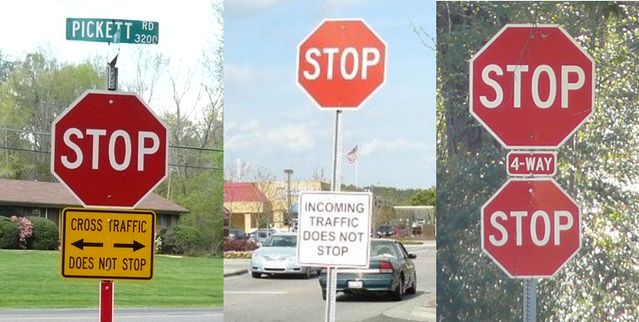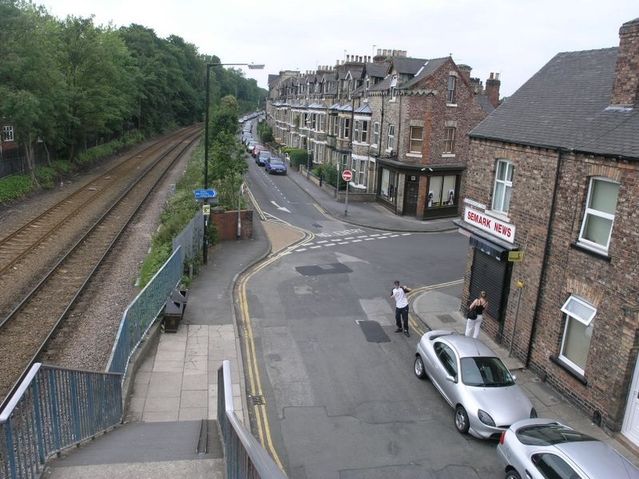A recent article in The Economist reminds us that American traffic-control arrangements are among the worst in the world. The data are shocking and the reasons have been obvious for some time.
In 2013, France, Australia, Spain, Britain, and Germany suffered between 2.9 (Britain) and 5.4 (Australia) road fatalities per 100,000 inhabitants. The United States suffered 10.6 deaths per 100,000 inhabitants, a rate twice as high as the worst of these developed nations. But we drive more than the Brits, don’t we? No matter. British fatalities per billion vehicle/kilometers over the same period are 3.6 vs. 7.1 for the U.S. Per capita or per mile driven, U.S. traffic death figures are the worst among developed countries.
The differences between Britain and the U.S. are not small. The U.S. suffers from about 23,000 avoidable traffic deaths per year. By comparison, the things we are constantly told to be afraid of like airplane flights and terrorism are completely insignificant. Deaths resulting from terrorist activities in our worst recent year totaled just over 3,000.
What is the reason for the enormous disparity between U.S. traffic deaths and deaths in, say, Britain? The answer is that U.S. signs, signals, and road design ignore psychology. Traffic signs in the U.S. always control rather than inform. They tell you what you must do, rather than giving the information you need to make intelligent decisions. In the process, traffic signs distract drivers by directing attention away from the road. So accidents happen—many more than if driver's attention were undivided.
Look at the familiar stop sign. It does two bad things: First, it makes you look at the stop sign rather than the traffic—it distracts. Second, it doesn’t tell you what you need to know. It tells you to stop even when you can see perfectly well that there is no cross traffic. It shouts “don’t trust your own judgment!”

The picture above shows three stop signs that perfectly illustrate this problem. Two of the signs have additional confusing and distracting signs directly under them. Why are these necessary? Obviously people have come to ignore stop signs because they so often conflict with traffic realities. Stop signs often tell you to stop when it’s clearly safe to proceed. The added words puzzle and distract. Why the extra sign? Just what does it mean? All of this reasoning consumes time and attention.
The third sign, the double one, again shows that people ignore stop signs. The local Department of Transportation evidently decided that a REALLY BIG sign, even one with an outline different from the one people are used to (hence recognized more slowly), might actually get people to obey. But if “stop” really meant stop, none of this would be necessary.
The double stop sign is a on a four-way stop, the ultimate in stop sign idiocy—because what on earth is the point of halting traffic from all directions? We know that stopping and starting are a major contributor to pollution. Engines are least efficient when starting from an idle. And time is wasted. No other country I know of has four-way stops. They should be abolished, along with most other stop signs.
The fundamental problem is that a stop sign tells you to ignore what you are seeing. It tells you NOT to use your own judgement. What the sign should do is inform; it should tell you which road, yours or the cross-street you are approaching, and which one has the right of way. That is what you need to know—you don't need to be told to stop even when the road is completely clear. The elaborate and confusing signs in the picture above could all be replaced with a yield sign, which tells you what you need to know: Whether to continue or first look for cross traffic.

The picture above shows how drivers are informed rather than bullied in Britain, which has the lowest traffic-death rate and almost no stop signs. The picture shows a one-way street in York, a small town in the north of England. In the U.S., a street like this would have a stop sign at the T-junction with the cross street. Instead, there's a double dashed line across the street. That’s the British version of a yield sign. It tells the driver that the cross street has right of way. The driver can stop or not, depending on the traffic. The lines on the road are better than a sign because they are right in front of the driver, just where he or she should be looking, not off to one side, acting as a distraction.
Almost all U.S. stop signs should be replaced by yield signs (or roundabouts—more about those another time). This would save time and lives, reduce pollution, and cause fewer drivers to break the law. Impoverished precincts might also be less tempted to use safe but illegal behavior as a means of revenue enhancement.
Stop signs are but one of many problems with U.S. traffic control. I’ll have more to say about the other problems in later posts.




